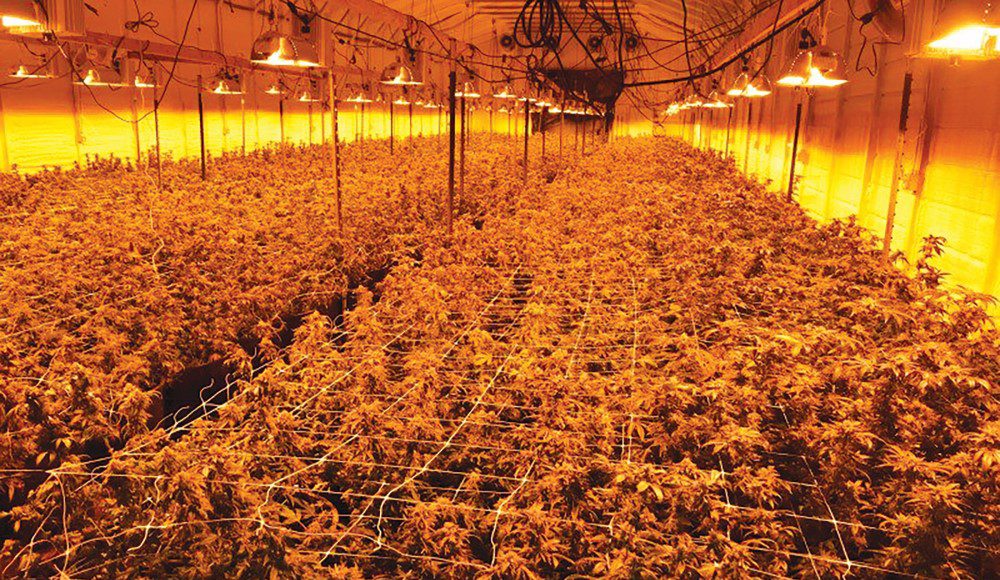From one angle, Gov. Gavin Newsom’s United Cannabis Enforcement Task Force has been effective. Last week it announced that in the task force’s first full calendar year of operations, the state has seized more than $312 million in unlicensed cannabis. That includes 190,000 pounds of illegal cannabis as well as 318,000 plants. Law enforcement also seized 119 illegally possessed firearms in 2023.
From another angle, though, it seems almost futile. In touting the numbers, the Department of Cannabis Control said one of the task force’s goals is to “advance the integrity of the licensed cannabis market,” and it noted that the illicit cannabis industry “undercuts the regulated cannabis market.”
Talk about an understatement. A better term than “undercuts” might be “dwarfs” or “overwhelms.” Or even “threatens the very existence of.” About two-thirds of all cannabis sales in California are illicit, a ludicrous situation in a state where pot has been legal for more than five years. The illicit market is hard to measure, but estimates put its size at roughly $10 billion; the California Department of Tax and Fee Administration estimates that the state racked up $5.2 billion in legal sales in 2023.
The disparity isn’t because illegally grown weed is superior. It’s almost entirely because, for most California cannabis consumers, the legal stuff is either not available or is too expensive. Prop. 64, which legalized pot in the state in 2016—legal sales began in 2018—was sold on the promise that legal weed would fill the state’s coffers with tax proceeds and that city and county governments would be allowed to ban cannabis operators from doing business in their communities.
As a result, about two-thirds of the state lacks any cannabis retailers. Pot delivery is allowed statewide but is often unavailable, and those who can access legal pot have to pay an enormous amount of taxes: regular sales taxes plus the state’s 15% excise tax, plus whatever local taxes might be levied. Add to that the cost of legal businesses having to adhere to costly regulations that illicit vendors can ignore, and the price of dispensary weed is often double or more what people pay their local dealer.
Indeed, all of the problems cited in the DCC’s press release as caused by the illegal market—environmental harms and product safety, to name but two—would be far less severe if legal pot were both affordable and widely accessible. But it isn’t, and the business is imploding as a result as illicit operators continue to thrive despite the state’s enforcement actions, which barely put a dent in the illegal market.
In short, it’s a demand problem, not a supply problem. If the state were to allow demand to reach its natural level—say, by cutting or eliminating the excise tax or by forcing local jurisdictions to allow licensed pot companies to do business, the illegal market would rapidly shrink.
To be fair, California’s home-rule policy is enshrined in the state constitution, forestalling the possibility of forcing legal pot on local jurisdictions. The excise tax, on the other hand, could easily be cut if only there were political will. But that’s in short supply lately, as California is now running a budget deficit and the designated recipients of the excise-tax proceeds—chiefly, anti-drug programs, environmental initiatives and public-safety groups, including the cops—are unlikely to sign on with cutting off their own funding.
“I don’t see that there’s an appetite for cutting the tax,” said Pamela Epstein, chief legal and regulatory officer of Terpene Belt Farms and, until recently, president of the California Cannabis Industry Association.
That might change in the future, but in the meantime, Epstein said there are things the state can do to ease the burden on the legal industry. One major reform would be “regulatory flexibility,” she said, especially when it comes to obtaining and transferring licenses.
The difficulty of doing so has crimped business and put off many would-be entrepreneurs. That and other such reforms are “light-touch areas” that would be “easy wins” for the state, she said. When it comes to state regulations, she added, “it’s just too expensive to be compliant.”













